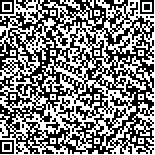下载中心
优秀审稿专家
优秀论文
相关链接
摘要

本文在介绍航空高光谱热红外的两种发射率反演算法——ARTEMISS算法和ASTER TES算法基础上,以甘肃柳园地区的热红外高光谱TASI数据为基础,对实验区进行了发射率反演,结合野外实测结果,对两种算法的图像质量和精度进行了对比分析。结果显示,两种算法均能满足反演精度要求,ASTER TES算法图像质量好,精度较高;ARTEMISS步骤简单,反演结果能很好地体现出岩性差异。在实际应用中应结合不同的应用要求来选择不同的反演算法。
This paper presents two temperature-emissivity separation algorithms of hyper spectral thermal airborne infrared data: the Automatic Retrieval of Temperature and Emissivity using Spectral Smoothness (ARTEMISS) algorithm and the ASTER temperature-emissivity separation(ASTER TES)algorithm. These two algorithms are applied to separate the temperature and emissivity derived from data on the Liuyuan regionusingthethermal airborne spectrographic imager. Results of the two algorithms, as applied on the data from field measurements, were analyzed and compared in terms of their image quality and accuracy. The results showed that both algorithms meet the accuracy requirements. However, some differences also exist: the ASTER TES algorithm has good image quality and high precision, where as the ARTEMISS algorithm has simple steps and an emissivity that can better reflect the differences in litho logy than the former algorithm. In practical applications, algorithms should be chosen depending on the requirements of the application.

